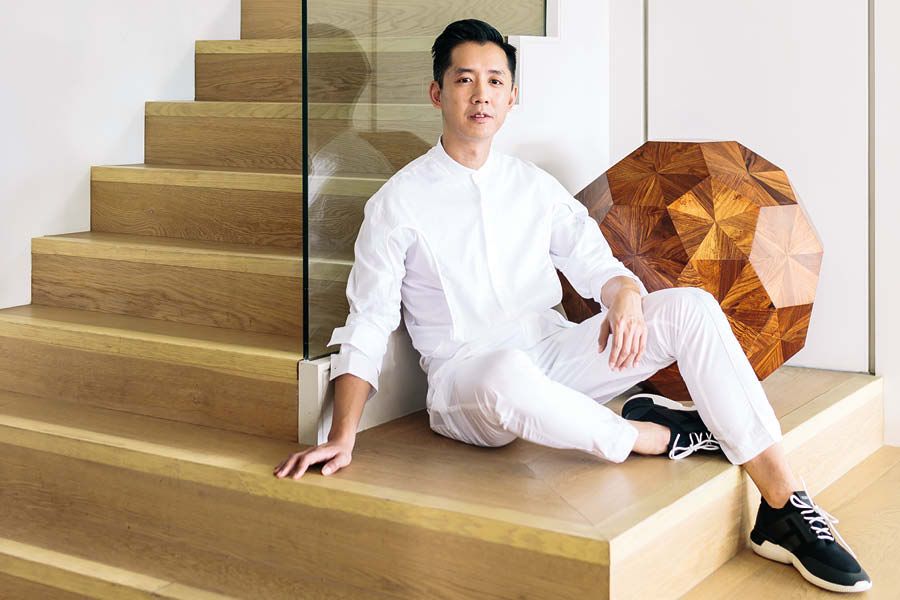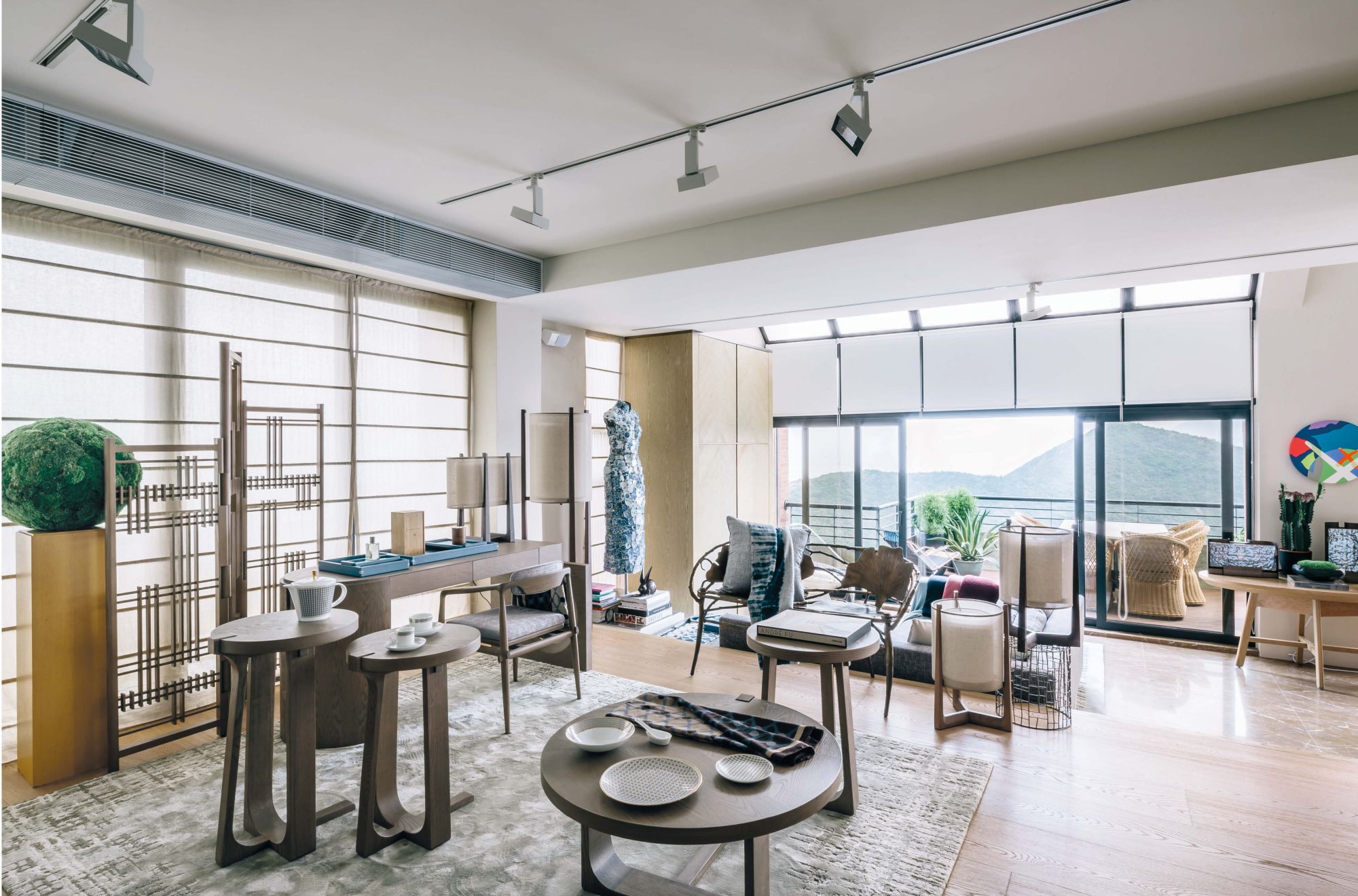With the launch of a complete André Fu Living collection, the designer invites us into his home, revealing a creative side of himself that’s rarely seen
André Fu was so struck by a friend’s Hong Kong apartment when he visited a decade ago that he eventually made his own home in the same building. And it’s no wonder. On entering the designer’s Deep Water Bay apartment, you are immediately drawn to the double-height, floor-to-ceiling windows directly ahead.
They preside over a vista that spans almost 270 degrees, from Deep Water Bay in the west, across Ocean Park and Middle Island, all the way to South Bay and Repulse Bay in the east. Perched high in the slim, high-rise tower, it’s like you are on the side of a cliff, looking down and out over Hong Kong’s ocean, beaches and beauty.
“I’m sure I’m not the only one who has this view, but it’s quite mesmerising. It doesn’t feel like my usual encounter with Hong Kong,” says André. “And because my daily schedule has become increasingly demanding, I thought that if my personal home can physically evoke that sense of retreat, or just an escape from the urbanity, that would be something I would really appreciate.”
See also: André Fu Shares His Inspiration Behind The St Regis Hong Kong

Before André moved in five years ago, he gutted the place and streamlined it. “I kept it fairly open-plan,” he says. The downstairs is one large split-level space with open-plan kitchen and salon, and then a few stairs lead down to a dining-living area adjacent to the windows and that magnificent view. The two bedrooms overlook the dining-living space from a balcony above, also enjoying the same view through those light-gathering double-height windows.
The design of the apartment takes a “modern, purist approach,” he says. “I always feel that the luxury of Hong Kong is actually to have space, and having space that can evolve with time.” This is advice he always gives people when asked about designing their residences, and it’s something he has put into practice in his own home.




